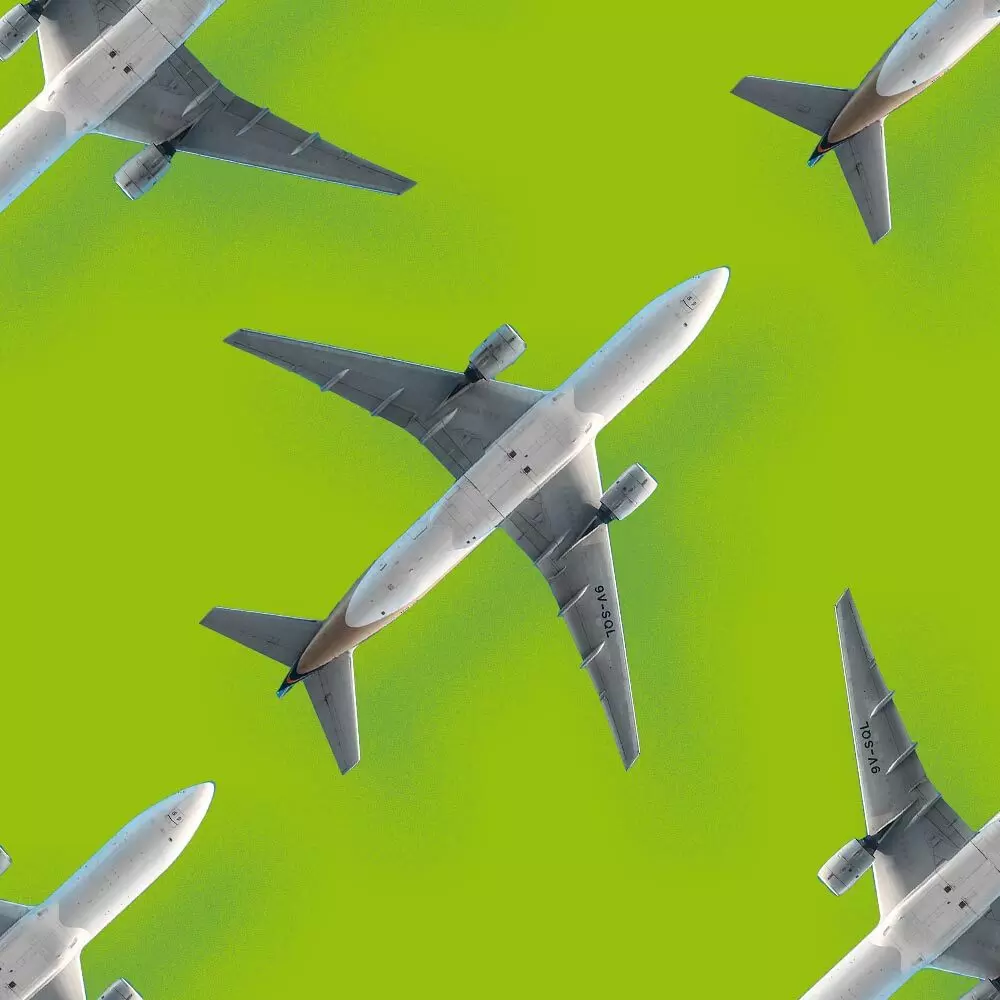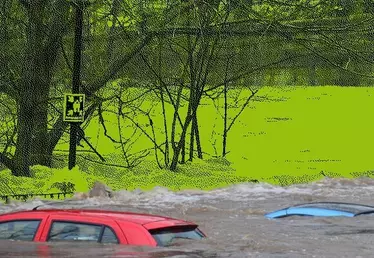

Hero banner custom title
Can we truly make aviation greener?
4 min
In order to fly without worsening climate change, the airline industry must change quickly: hydrogen flights, energy-efficient aircraft, limited air traffic, let's explore some of the possibilities!
However, these efforts have accelerated in the face of the climate emergency. Aviation now accounts for 2 to 3% of global greenhouse gas emissions. Last October, the sector committed to achieving carbon neutrality* by 2050, in the wake of France and the European Union. To meet this challenge, manufacturers are focusing on technological solutions.
Changing fuels
Their main lever: “alternative fuels”. Instead of petrol-based kerosene, some manufacturers are promising, in the near future, aircraft powered by hydrogen - a fuel that does not emit CO₂. Another possibility is synthetic fuels, composed of hydrogen and CO₂ recovered from the atmosphere or from factories. In Portugal, a new sustainable fuel will be made from CO₂ gathered from a waste processing plant.
Clément Jarrossay, a member of the French Aéro-décarbo association and an employee of the aeronautics industry, has co-written a report on the decarbonisation of the aviation sector for the Shift Project (a think tank for a less CO₂-emitting economy). According to him, these solutions represent “a huge technological gamble. And above all, their production requires a phenomenal consumption of electricity”. According to the report, producing enough hydrogen to fly French planes in 2050 would mean, for example, multiplying the wind farm by at least 4.5 and devoting it entirely to this use! And that would be on condition that everything possible is done to reduce the energy consumption of aircraft...
In the same vein, “biofuels”, derived from agriculture, also appear as a possible alternative. But these emit more CO₂, are expensive and, above all, very limited: their development would reduce the land available for food crops.
Energy-efficient aircraft
Manufacturers have also put forward a range of solutions: technological improvements to aircraft. Engines that consume less energy, lighter composite materials, etc.
“If all these improvements are implemented, we could reduce aircraft emissions by around 20% compared to the best current aircraft”
However, we still need to succeed in renewing the entire air fleet quickly enough to benefit from these new technologies...
Lastly, there is an important aspect of the climate impact of aircraft: condensation trails. These tapered clouds that can sometimes be seen in their trail are made of water vapor, which condenses around the particles emitted by the engines. They have a warming effect on the planet. But their impact and the means to mitigate it are still largely unknown.
Limiting air traffic
In any case, the Shift Project report is clear: the growth curve of air traffic must be curbed in order to achieve climate goals. Their reasoning? If we are aiming for a 67% chance of not exceeding 2°C of warming compared to the pre-industrial era in 2050, the aviation sector must, like other sectors, do its part in the effort to reduce emissions. In this case, it should not emit more than 21,600 mega tonnes of CO₂ between 2019 and 2050.
However, even if all the technological solutions promised by the industry were applied as soon as possible - a scenario considered unrealistic - the aviation sector would exceed this carbon budget by 12% (24,273 MT CO₂). And in a slightly less optimistic scenario, it would exceed it by 52% (32,800 MT CO₂).
As a result, the current traffic growth of 3 to 4% per year (excluding the Covid crisis) is not sustainable in the face of climate imperatives. According to the report's scenarios, this growth should increase to +2.5% per year, or even decrease slightly, by -0.8% per year. Or even more if these technologies, which are still far from ready, are not available.
“Talking about reducing air traffic is still a taboo among manufacturers, as their economic model is based on growth”, stresses Mr Jarrossay. His association, Aéro-Décarbo, is trying to support the notion of a strict carbon budget, which it hopes will be included in French and European legislation.
In the meantime, travelers should limit their international flights and, for shorter journeys, prefer the train... or a well-filled car!
Planes emit between 85 and 140 grams of CO₂ per passenger per kilometer... compared to 3 to 5 g of CO₂ for trains.
As for the car, its emissions are of the same order of magnitude as those of a plane if it carries two passengers.
* Carbon neutrality: balance between human carbon emissions and their absorption by carbon sinks, making it possible to achieve zero net emissions.











